Modeling and Prefeasibility Management, and Conservation Strategies for Fuentetoba Springs, (Spain)
Abstract
:1. Introduction and Objectives
- Develop a methodology for schemes for the sustainable regulation of the flows of a spring destined for human supply (in this case, the city of Soria), and which seeks to improve ecological and waterfall flow;
- Draft preliminary water-supply management to guarantee, as a minimum, 90% of the flow necessary to supply Soria;
- Simulate the regulation of the spring as a preliminary phase using natural recharge data obtained from the application of a precipitation–runoff model;
- Develop at a theoretical level the effect of pumping on the flow of a spring that is regulated by adapting and preparing a rainfall–runoff model;
- Design a preliminary management system at the lowest possible cost while preserving environmental and sustainable requirements.
2. Methodology
3. Site Description and Karstic System
4. Results
4.1. Speleological Exploration Results
4.2. Numerical Model of Precipitation–Runoff to Study Fuentetoba Spring Regulation
- If the level of the two reservoirs is positive, proceed as in the CREC model. If the discharge flow rate is less than water consumption (Cj), the difference is pumped, and tanks are emptied in the same proportion;
- If Reservoir H is positive, and Reservoir G is negative, percolation from S to H is used to fill Reservoir G:
- If Level G is positive, the difference is the new percolation from S to H and proceeds as in the CREC model. If the discharge flow rate is less than the water consumption (Cj), the difference is pumped, and tanks are emptied in the same proportion;
- If Level G is negative, percolation from S to H is used to fill Level G, and the entire flow necessary for water consumption (Cj) is pumped (Bj).
- If Reservoir H is negative, percolation from S to H is used to feed Reservoir H:
- If Level H is positive, the difference is the new percolation from S to H, and proceeds as in Point 2, considering the difference between Level H and the transfer from S to H as the percolation from S to H;
- If Level H is negative, percolation from S to H serves to fill Level H, and all necessary flow for water consumption (Cj) is pumped (Bj).
5. Discussion: Regulation Planning of Fuentetoba Spring for Soria Supply
5.1. Possible Regulatory Options
5.2. Regulation Prefeasibility
6. Conclusions
Author Contributions
Funding
Acknowledgments
Conflicts of Interest
References
- López Bermúdez, F.; Quiñonero, J.M.; García, R.; de Valmaseda, E.M.; Sánchez Fuster, M.C.; Chocano, C.; Guerrero, F. Fuentes y Manantiales de la Cuenca del Segura. Región de Murcia; Instituto Euromediterráneo del Agua, Confederación Hidrográfica del Segura: Murcia, Spain, 2014; ISBN 978-84-92988-24-2. [Google Scholar]
- Kresic, N. Groundwater Resources: Sustainability, Management and Restoration; McGraw-Hill: New York, NY, USA, 2009; p. 852. [Google Scholar]
- Kresic, N. Types and Classifications of Springs. In Groundwater Hydrology of Springs: Engineering, Theory, Management, and Sustainability; Kresic, N., Stevanovic, Z., Eds.; Elsevier: Amsterdam, The Netherlands, 2010; pp. 31–86. [Google Scholar] [CrossRef]
- Kresic, N.; Stevanovic, Z. Groundwater Hydrology of Springs: Engineering, Theory, Management, and Sustainability; Elsevier: Amsterdam, The Netherlands, 2010; p. 573. [Google Scholar]
- Kazakis, N.; Chalikakis, K.; Mazzilli, N.; Ollivier, C.; Manakos, A.; Voudouris, K. Management and research strategies of karst aquifers in Greece: Literature overview and exemplification based on hydrodynamic modelling and vulnerability assessment of a strategic karst aquifer. Sci. Total Environ. 2018, 643, 592–609. [Google Scholar] [CrossRef] [PubMed]
- Manakos, S.; Ntona, M.; Kazakis, N.; Chalikakis, K. Enhanced Characterization of the Krania–Elassona Structure and Functioning Allogenic Karst Aquifer in Central Greece. Geosciences 2019, 9, 15. [Google Scholar] [CrossRef] [Green Version]
- Sáenz, C. La Fuente de La Toba y la Hidrología local. Proyecto de Conducción de Aguas Potables de La Toba a Soria. Mapas y Anejos; Unpublished Report; Ayuntamiento de Soria: Soria, Spain, 1935; p. 59. [Google Scholar]
- Sáenz, C. Pico Frentes (Partes I a V). Celtiberia 1955, 9, 245–274. [Google Scholar]
- Rosas, P.; Sanz, E.; Menéndez-Pidal, I. Hidrogeología del Karst de Pico Frentes (Cordillera Ibérica, España). Estud. Geológicos 2016, 72, e047. [Google Scholar] [CrossRef] [Green Version]
- Sanz, E.; Rosas, P.; Menéndez-Pidal, I. Drainage and siphoning of a karstic spring: A case study. J. Cave Karst Stud. 2016, 78, 183–197. [Google Scholar] [CrossRef]
- Fonollá, C.; Sanz, E.; Menéndez-Pidal, I. Lateral ferruginous groundwater transfer as the origin of the iron crusts in caves: A case study. J. Cave Karst Stud. 2020, 82, 183–197. [Google Scholar] [CrossRef]
- Jevtic, G.; Dimkic, D.; Dimkic, M.; Josipovic, J. Regulation of the Krupac spring outflow regime. In Water Resources and Environmental Problems in Karst: Cvijic Karst; Tevanovic, Z., Milanovic, P., Eds.; FMG: Belgrade, Serbia, 2005; pp. 321–326. [Google Scholar]
- Portier, L.; Ricour, J.; Tardieu, B. Port-Miou and Bestouan freshwater submarine spring (Cassis–France) investigations and works (1964–1978). In Water Resources and Environmental Problems in Karst: Cvijic Karst; Tevanovic, Z., Milanovic, P., Eds.; FMG: Belgrade, Serbia, 2005; pp. 267–274. [Google Scholar]
- Sanchez, H.; Robert, B.; Pellerin, R. A project portfolio risk–opportunity identification framework. Proj. Manag. J. 2008, 39, 97–109. [Google Scholar] [CrossRef]
- Ministerio para la Transición Ecológica. Gobierno de España. Legislación. Available online: https://www.miteco.gob.es/es/calidad-y-evaluacion-ambiental/legislacion/ (accessed on 20 October 2020).
- Guilbot, A. Modélisation des Écoulements d’un Aquifère Karstique (Liaison Pluie-Débit). Application Aux Bassins de Saugras et du Lez. Ph.D. Thesis, Université des Sciences et Techniques du Languedoc, Montpellier, France, 1975. [Google Scholar]
- Pérez, J.; Sanz, E. Hydrodinamic characteristics and sustainable use of karst aquifer of high environmental value in the Cabrejas range (Soria, Spain). Environ. Earth Sci. 2010, 1, 20–30. [Google Scholar] [CrossRef]
- Bakalowicz, M. La zone d’infiltration des aquifères karstiques. Méthodes d’étude. Structure et fonctionnement. Hydrogéologie 1995, 4, 3–21. [Google Scholar]
- Mangin, A. Contribution à l’étude hydrodynamique des aquifères karstiques. 3ème partie. Constitution et fonctionnement des aquifères karstiques. Ann. Spéléologie 1975, 30, 21–124. [Google Scholar]
- Bakalowicz, M.; Mangin, A. L’aquifère karstique. Sa définition, ses caractéristiques et son identification. Mémoire Hors Série Société Géologique Fr. 1980, 11, 71–79. [Google Scholar]
- Sanz, E. Les systemes karstiques des Sierras de Urbion et de Neila, Burgos, Espagne. Hydrol. Sci. J. 1996, 41, 385–398. [Google Scholar]
- Sanz, E. Le karst du canyon du Lobos et son fonctionnement hydrogéologique. Karstologia 1996, 28, 49–56. [Google Scholar] [CrossRef]
- Fleury, P.; Ladouche, B.; Conroux, Y.; Jourde, H.; Dörfliger, N. Modelling the hydrologic functions of a karst aquifer under active water management—The Lez spring. J. Hydrol. 2009, 365, 235. [Google Scholar] [CrossRef]
- Sanz, E. Simulation of Spring Management with Quasi-Aggregated Model. J. Hydrol. Eng. 1999, 4, 77–79. [Google Scholar] [CrossRef]
- García Lorenzana, M. Captación de Agua Subterránea en el Acuífero de Pico Frentes. Bachelor’s Thesis, Universidad Politécnica de Madrid, Madrid, Spain, 2016. [Google Scholar]
- Confederación Hidrográfica del Duero. Available online: http://www.mirame.chduero.es/DMADuero_09_Viewer/viewerShow.do;jsessionid=C0858653A78DE4AA03598E6B84E6C3F2?action=showViewer (accessed on 20 August 2020).
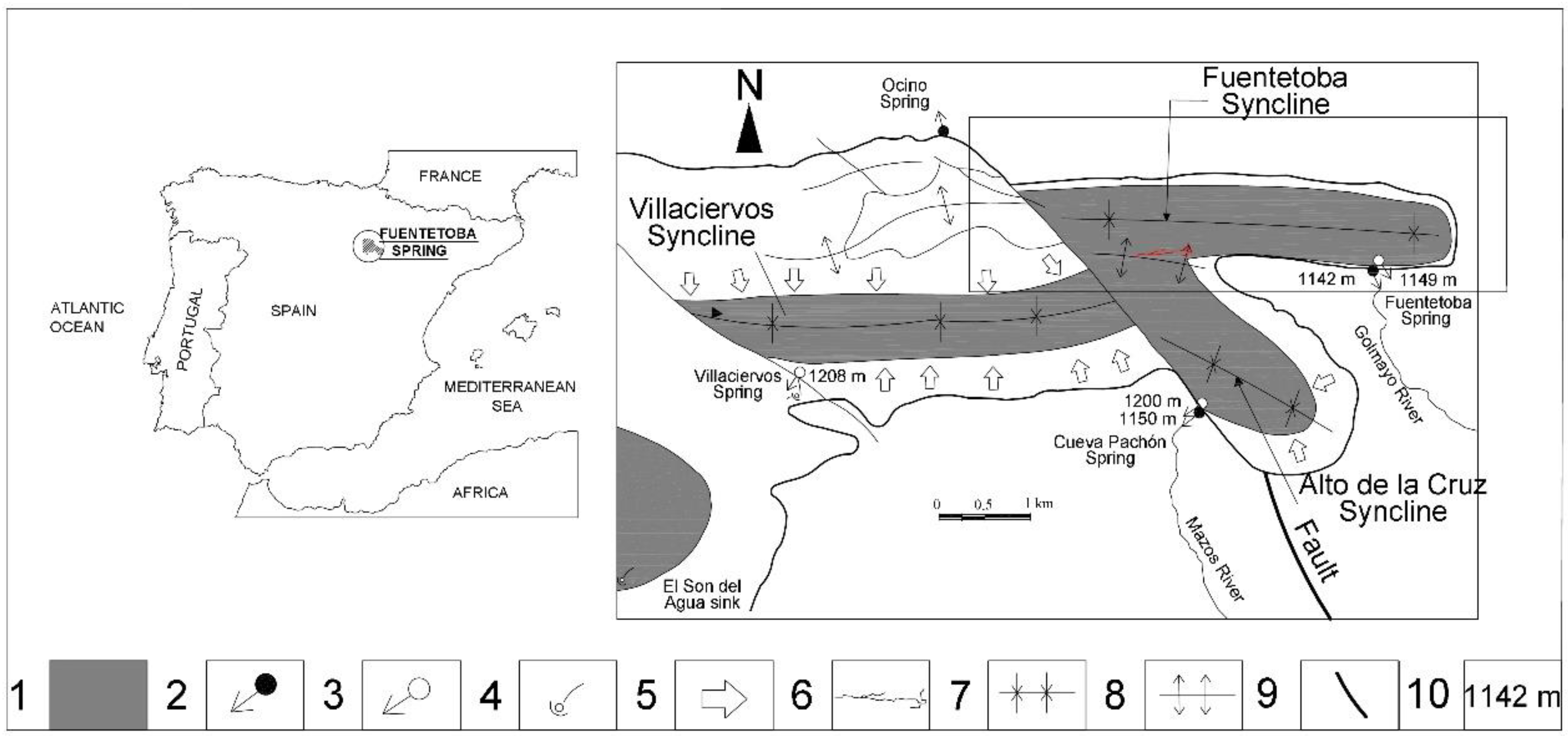
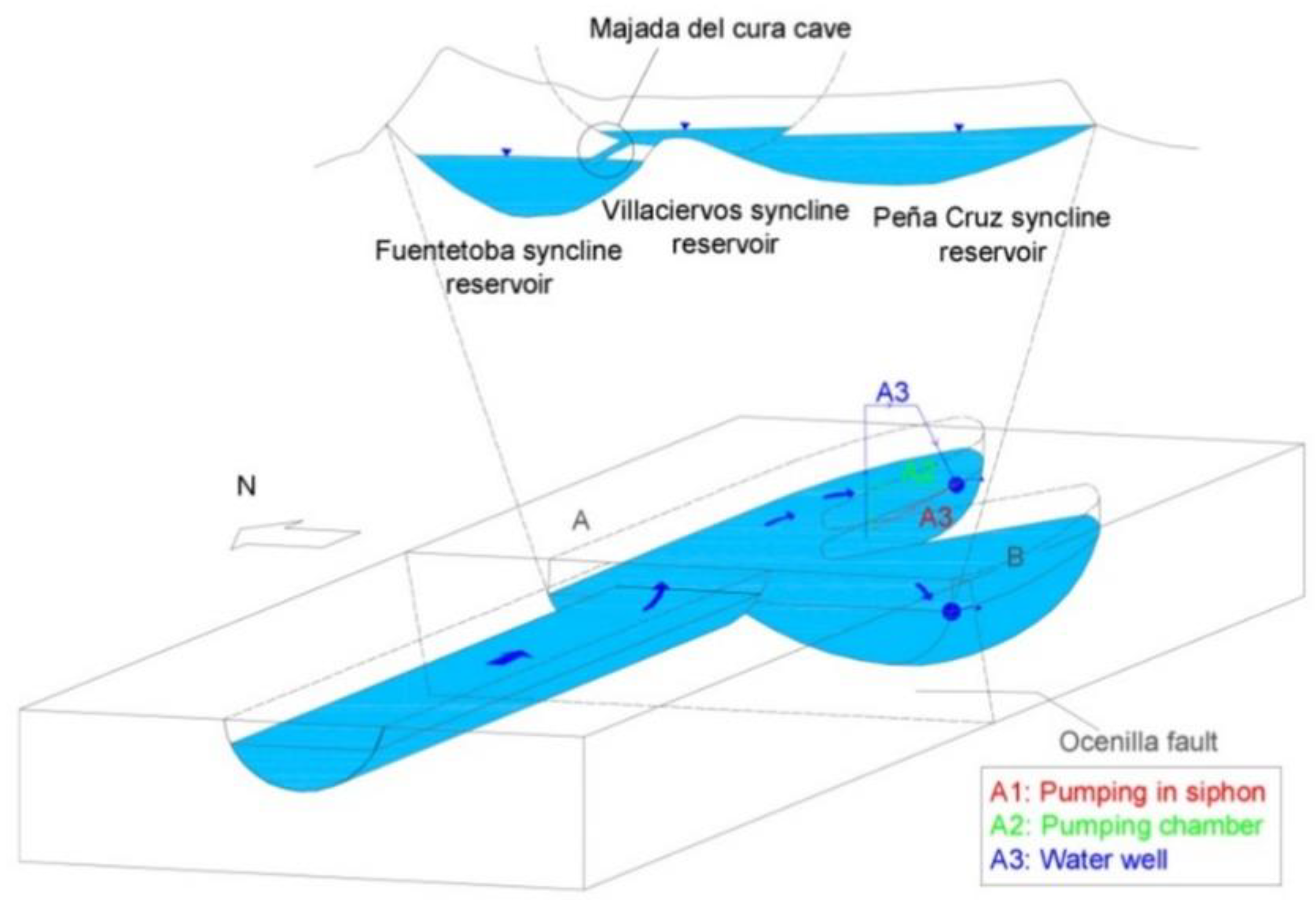
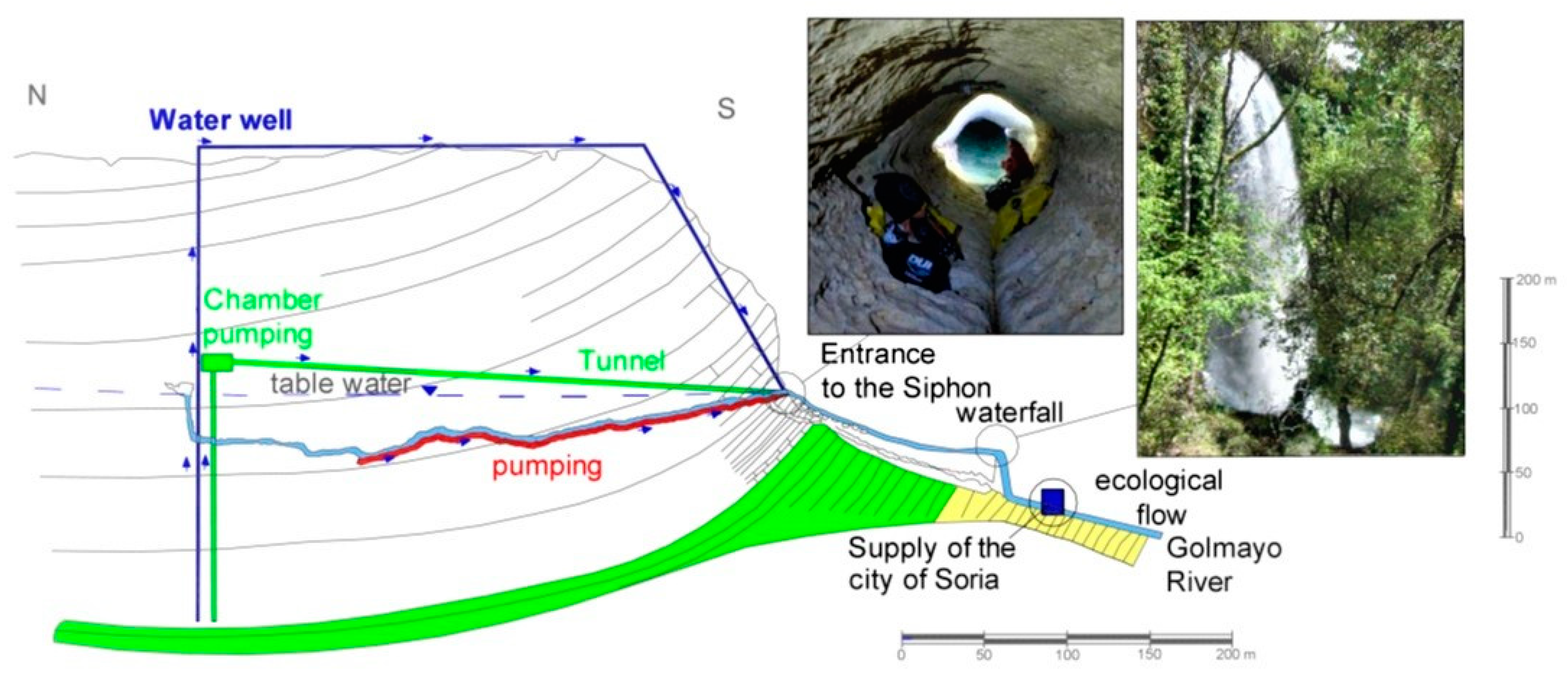
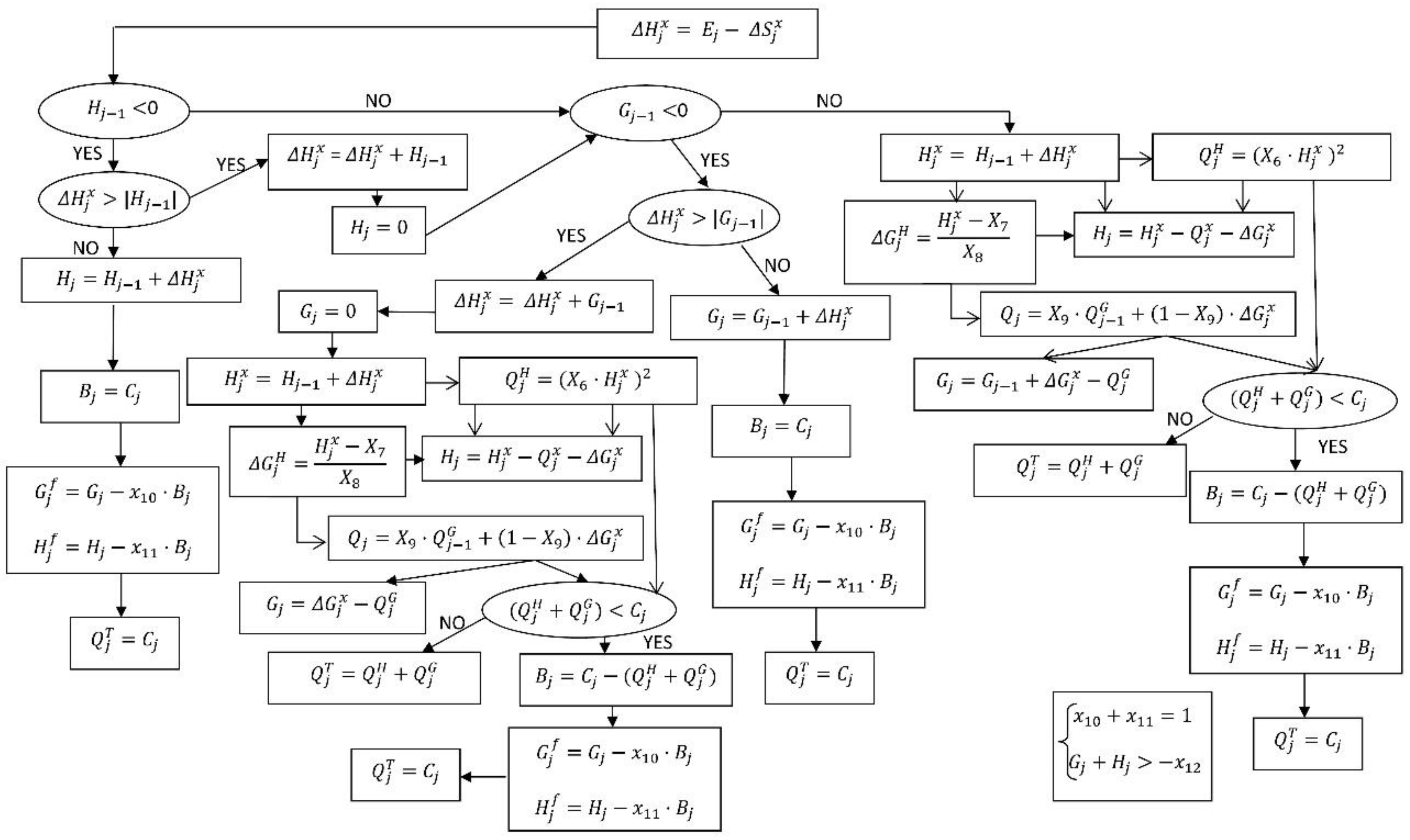
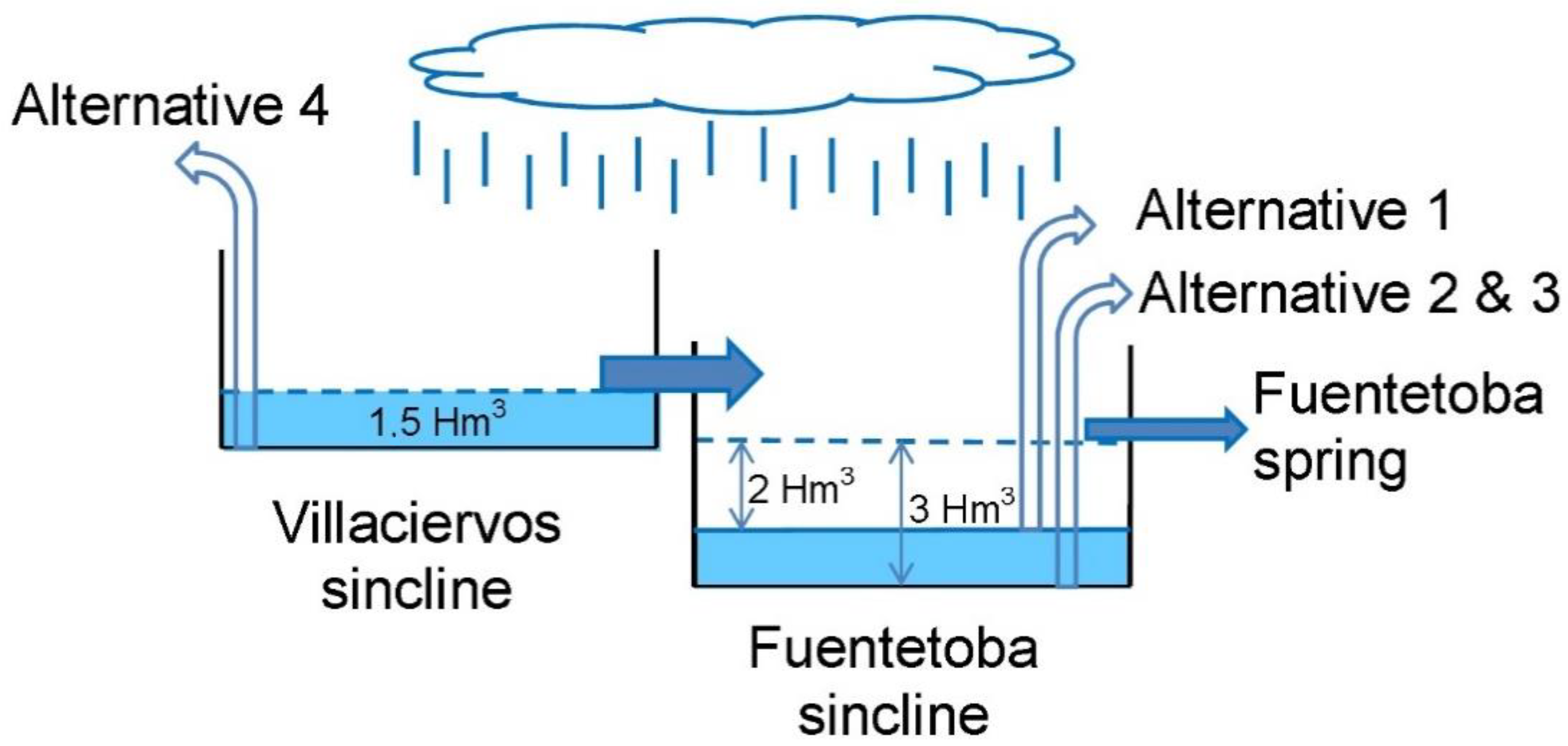

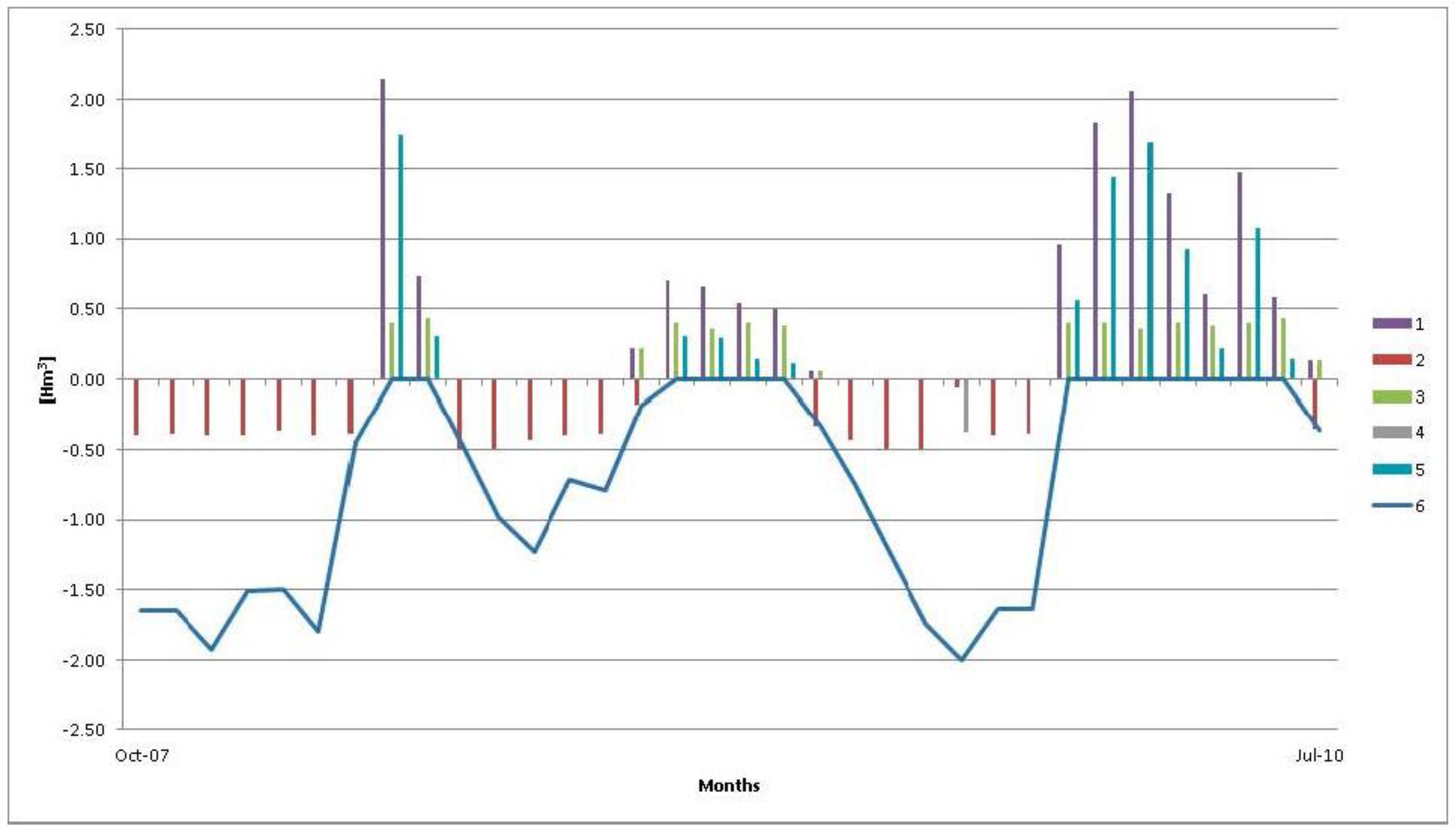

| Available Groundwater Resources (hm3) | Natural Recharge (hm3; %) | Fuentetoba Spring Discharge (hm3; %) | Pumping (hm3; %) | Spring Water Catchment (hm3; %) | Supply Deficit (hm3; %) | Uncaptured Spring Discharge (hm3; %) |
|---|---|---|---|---|---|---|
| 2 hm3 (Option 1) | 150.99 (100%) | 84.07 (42.8%) | 64.73 (42.8%) | 35.71 (23.6%) | 7.01 (4.6%) | 48.37 (32%) |
| 3 hm3 (Options 2 and 3) | 150.99 (100%) | 76.89 (51%) | 73.35 (48.6%) | 32.08 (21.2%) | 2.02 (1.34%) | 44.81 (29.6%) |
| 4 hm3 (Option 4) | 150.99 (100%) | 74.91 (49.6%) | 76.08 (50.4%) | 31.37 (20.7%) | 0.0 (0%) | 43.54 (28.8%) |
Publisher’s Note: MDPI stays neutral with regard to jurisdictional claims in published maps and institutional affiliations. |
© 2020 by the authors. Licensee MDPI, Basel, Switzerland. This article is an open access article distributed under the terms and conditions of the Creative Commons Attribution (CC BY) license (http://creativecommons.org/licenses/by/4.0/).
Share and Cite
Sanz, E.; Rosas, P.; Menéndez-Pidal, I.; de Ojeda, J.S. Modeling and Prefeasibility Management, and Conservation Strategies for Fuentetoba Springs, (Spain). Sustainability 2020, 12, 10131. https://doi.org/10.3390/su122310131
Sanz E, Rosas P, Menéndez-Pidal I, de Ojeda JS. Modeling and Prefeasibility Management, and Conservation Strategies for Fuentetoba Springs, (Spain). Sustainability. 2020; 12(23):10131. https://doi.org/10.3390/su122310131
Chicago/Turabian StyleSanz, Eugenio, Pablo Rosas, Ignacio Menéndez-Pidal, and Joaquin Sanz de Ojeda. 2020. "Modeling and Prefeasibility Management, and Conservation Strategies for Fuentetoba Springs, (Spain)" Sustainability 12, no. 23: 10131. https://doi.org/10.3390/su122310131
APA StyleSanz, E., Rosas, P., Menéndez-Pidal, I., & de Ojeda, J. S. (2020). Modeling and Prefeasibility Management, and Conservation Strategies for Fuentetoba Springs, (Spain). Sustainability, 12(23), 10131. https://doi.org/10.3390/su122310131





